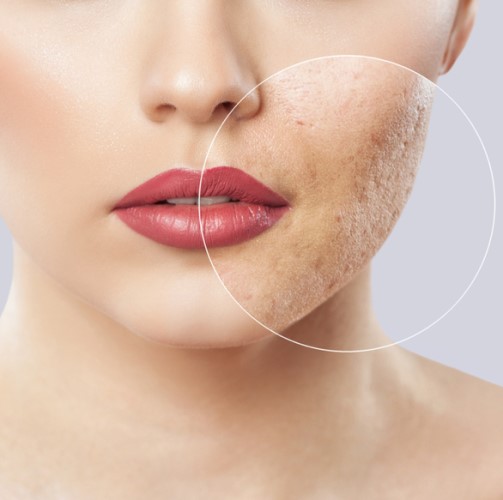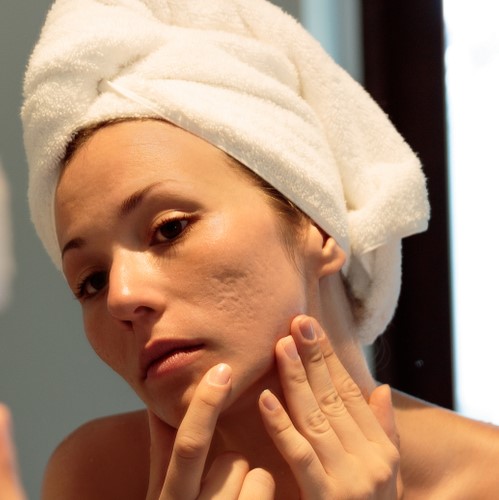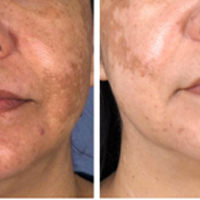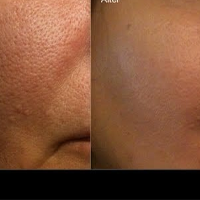Service
SUBCISION
SUBCISION TREATMENT FOR Acne Scars in Islamabad
Acne is a common issue and the scars which result treatments quite often. Everyone experiences it at some point of their lives and Acne scar treatment is important for the skin to stay smooth. Acne includes whiteheads and pimples and blackheads that make the overall face appear dull. Excessive bacteria residing under skin which get trapped in clogged pores results in Acne. A flawless Acne problem affects face, neck area, chest and even back and shoulders that require decent Acne treatment.
Subcision is a minor in-office surgical procedure that’s used to treat acne scars.
How is subcision performed?
The procedure of subcision is described below.
- The area to be treated is cleansed to remove dirt and make-up
- The scar margins may be defined with a surgical marker, adjusting overhead lighting to delineate depressions.
- Local anaesthetic is infiltrated.
- A tri-bevelled needle (number 18 or 20 gauge) or a Nokor needle (fig.3) is inserted at an acute angle adjacent to the scar with the bevel upwards and parallel to the skin surface. Smaller gauge needles (25–27) may be used for small superficial scars and wrinkles.
- The needle is advanced through the dermis and moved back and forth in a fan-like motion. A snapping sound is heard as fibrous bands are transected in the deep dermis and deep dermal subcutaneous plane.*
- The needle is rotated 90 degrees and moved again in a fan-like motion through the dermal scar (fanning subcision).
- The needle is removed in Subcision Treatment.
- Manual pressure is applied to the wound for several minutes.


How is subcision performed?
The procedure of subcision is described below.
- The area to be treated is cleansed to remove dirt and make-up
- The scar margins may be defined with a surgical marker, adjusting overhead lighting to delineate depressions.
- Local anaesthetic is infiltrated.
- A tri-bevelled needle (number 18 or 20 gauge) or a Nokor needle (fig.3) is inserted at an acute angle adjacent to the scar with the bevel upwards and parallel to the skin surface. Smaller gauge needles (25–27) may be used for small superficial scars and wrinkles.
- The needle is advanced through the dermis and moved back and forth in a fan-like motion. A snapping sound is heard as fibrous bands are transected in the deep dermis and deep dermal subcutaneous plane.*
- The needle is rotated 90 degrees and moved again in a fan-like motion through the dermal scar (fanning subcision).
- The needle is removed in Subcision Treatment.
- Manual pressure is applied to the wound for several minutes.

How is Acne caused?
Acne is also prompted by a skin bacterium called P. acne. In some people, this bacteria starts to grow swiftly in the already swollen hair follicle, producing substances that can lead to burning sensation on the skin. At times, the follicle walls explode, spreading inflammation to the adjacent skin. This is how acne turns from blackheads to pimples and nodules.

How is Acne caused?
Acne is also prompted by a skin bacterium called P. acne. In some people, this bacteria starts to grow swiftly in the already swollen hair follicle, producing substances that can lead to burning sensation on the skin. At times, the follicle walls explode, spreading inflammation to the adjacent skin. This is how acne turns from blackheads to pimples and nodules.
Why SUBCISION treatment?
Faster, visible and effective results
The mechanism of subcising deeper scar tissue also seems to be more effective than that of micro needling.
Subcision is a cost-effective treatment. The required materials for subcision are limited to materials that are readily used within practices
Subcision treatment VIDEOS
SUBCIsiON TREATMENT






FAQs
How is subcision carried out?
Subcision is carried out with a cannula or Nokor needle depending on the scar type.
What is cannula subcision?
Cannula subcision is best for small areas that need subcision. A small hole is made in the skin with a needle. A cannula is carried through the hole to just below the skin. The cannula is used to separate the bands of scar tissue that are pulling the scar down.

